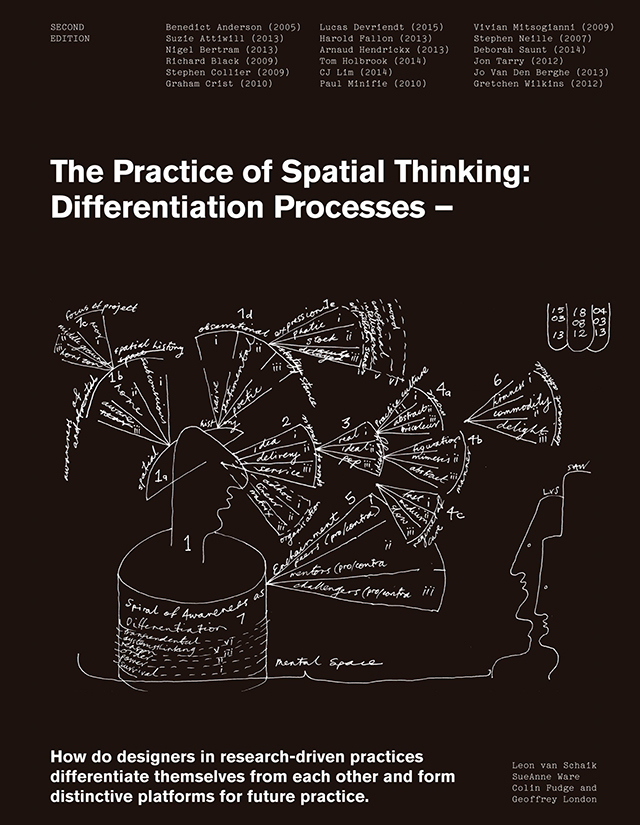The Practice of Spatial Thinking
The Practice of Spatial Thinking: Differentiation Processes, Second EditionLeon van Schaik, SueAnne Ware, Colin Fudge, Geoffrey London Actar Publishers/School of Architecture & Urban Design at RMIT University, January 2020Paperback | 8-1/2 x 11 inches | 232 pages | English | ISBN: 978-1948765350 | $29.95PUBLISHER'S DESCRIPTION: How do designers in research-driven practices differentiate themselves from each other and form distinctive platforms for future practice? The research presented in this second edition and carried out in Australia as part of an Australian Research Council Discovery Program is of significance for design practice, review, and our deeper understanding of the design of space and spaces. In continuing the exploration of spatial intelligence,” this research further develops our understanding of designers, how they work and what they draw on through their lives that shapes their spatial thinking, and their practice. The research also provides broader insights into a more public understanding and acknowledgement of our collective spatial intelligence. It shows how this could be developed and enhanced to provide more spatial and design literacy in our communities, and how these can engage with their changing environments. REFERRAL LINKS: dDAB COMMENTARY: In 2013, the School of Architecture and Urban Design at RMIT University published the first volume of The Practice of Spatial Thinking: Differentiation Processes, aka The Black Book. Presenting the research carried out as part of an Australian Research Council Discovery grant, the book focused on the "spatial intelligence" of design practices in a specifically Australian context. In turn, its release was limited, best I can gather, to Australia. With its second edition, the research done under the tutelage of Leon van Schaik, SueAnne Ware, Colin Fudge, and Geoffrey London is being shared with an international audience. The Design Practice Research program at RMIT is more than 25 years old, but the second Black Book presents working coinciding with the ARC Discovery grant, spanning primarily from 2009 to 2015, or the years following the publication of van Schaik's Spatial Intelligence in 2008. Early in The Practice of Spatial Thinking, spatial intelligence is defined as "the human capacity upon which architects, landscape architects and urban designers build their capacity for spatial thinking, their unique skill base." By focusing on practice, the research enables an understanding of the different techniques used by designers, while also illuminating how anyone — not just architects and the like — could tap into "our collective spatial intelligence" toward developments in their own communities. Design Practice Research is ambitious but also ambiguous and, by definition, very meta; it is educational research focused on the hows of architectural design more than the designs themselves. Or so it seems. It's hard to determine what aspects of the eighteen PhD case studies that make up the bulk of The Practice of Spatial Thinking are specific to the research at RMIT. To me, the case studies are presented simply as designs, with some commentary, or navel gazing, about the process of design thrown into the mix. Why my confusion? Perhaps I'm not reading the case studies deeply enough, or, better yet, perhaps I'm the wrong audience. Most likely the target audience is found in academia: architectural educators interested in the unique approach outlined by van Schaik decades ago and carried further in recent years by him and his colleagues. A best case scenario sees their research influencing how design reviews are done in other architecture schools: in a manner that focuses on the understanding of spatial intelligence in students and which, in turn, makes them better environmental designers. SPREADS:

Paperback | 8-1/2 x 11 inches | 232 pages | English | ISBN: 978-1948765350 | $29.95
PUBLISHER'S DESCRIPTION:
REFERRAL LINKS:
SPREADS:









